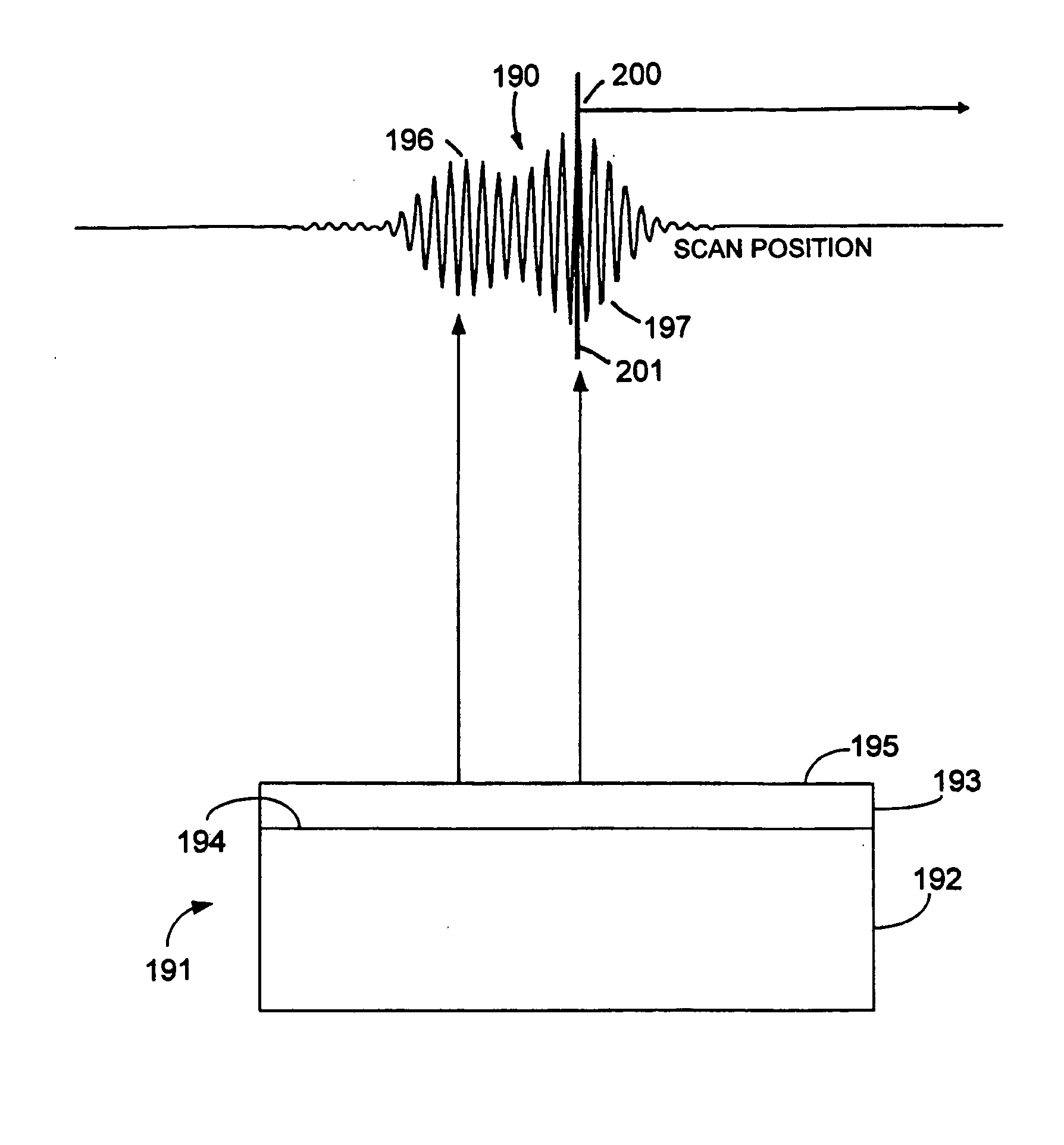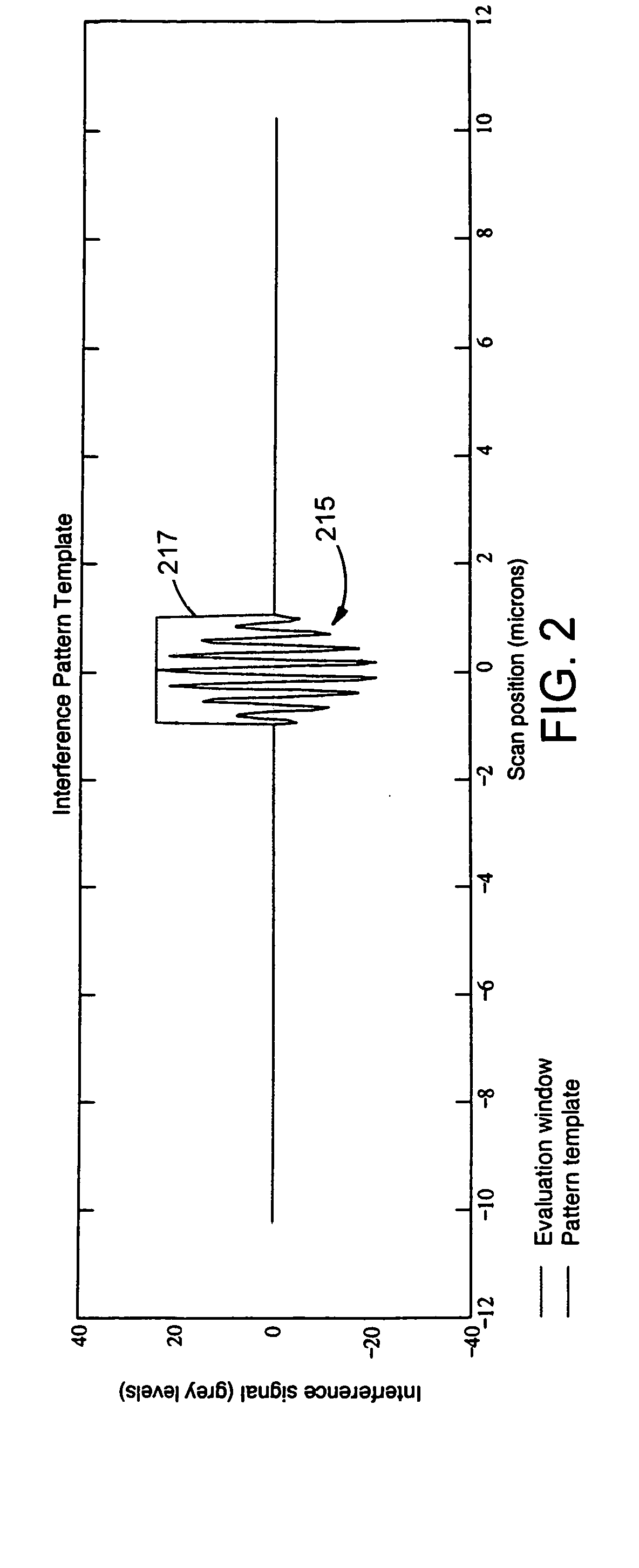Surface profiling using an interference pattern matching template
a surface profiling and pattern matching technology, applied in the field of interferometric analysis of objects, can solve problems such as erroneous spatial information regarding the substrate surface and film-air interfa
- Summary
- Abstract
- Description
- Claims
- Application Information
AI Technical Summary
Benefits of technology
Problems solved by technology
Method used
Image
Examples
examples
Determining a spatial property of a measurement object is further described the context of the following non-limiting examples.
1. Determining a Spatial Property of a Single-Surface Measurement Object
Referring to back to FIG. 1, interference signal 150 is but one of a total 101 interference signals representing a linear trace across the object surface. For convenience, the remaining 100 interference signals are not shown. The silicon dioxide object surface has an approximately spherical profile with PV=600 nm. The irradiation wavelength is 550 nm with a bandwidth of 100 nm. The bandwidth is Gaussian in wavenumber. The numerical aperture is 0.01 for normal incidence, collimated light. Each interference signal has a full scale digital resolution of 256 grey scale steps. The average signal strength is 20 grey levels amplitude AC above 65 grey levels DC. The signals have random noise having a standard deviation of 2 grey levels.
The 101 interference signals are transformed to an in...
PUM
 Login to View More
Login to View More Abstract
Description
Claims
Application Information
 Login to View More
Login to View More - R&D
- Intellectual Property
- Life Sciences
- Materials
- Tech Scout
- Unparalleled Data Quality
- Higher Quality Content
- 60% Fewer Hallucinations
Browse by: Latest US Patents, China's latest patents, Technical Efficacy Thesaurus, Application Domain, Technology Topic, Popular Technical Reports.
© 2025 PatSnap. All rights reserved.Legal|Privacy policy|Modern Slavery Act Transparency Statement|Sitemap|About US| Contact US: help@patsnap.com



